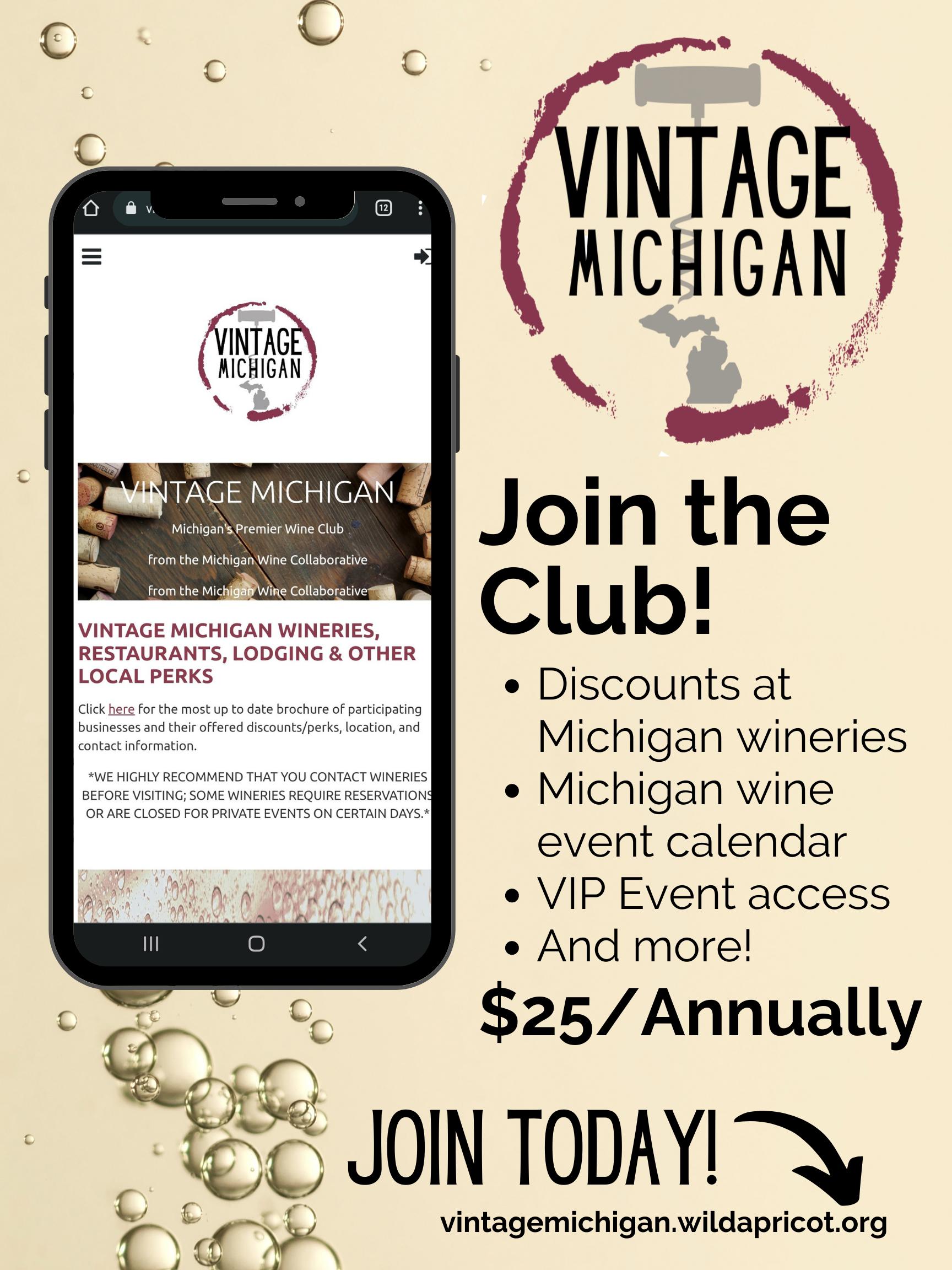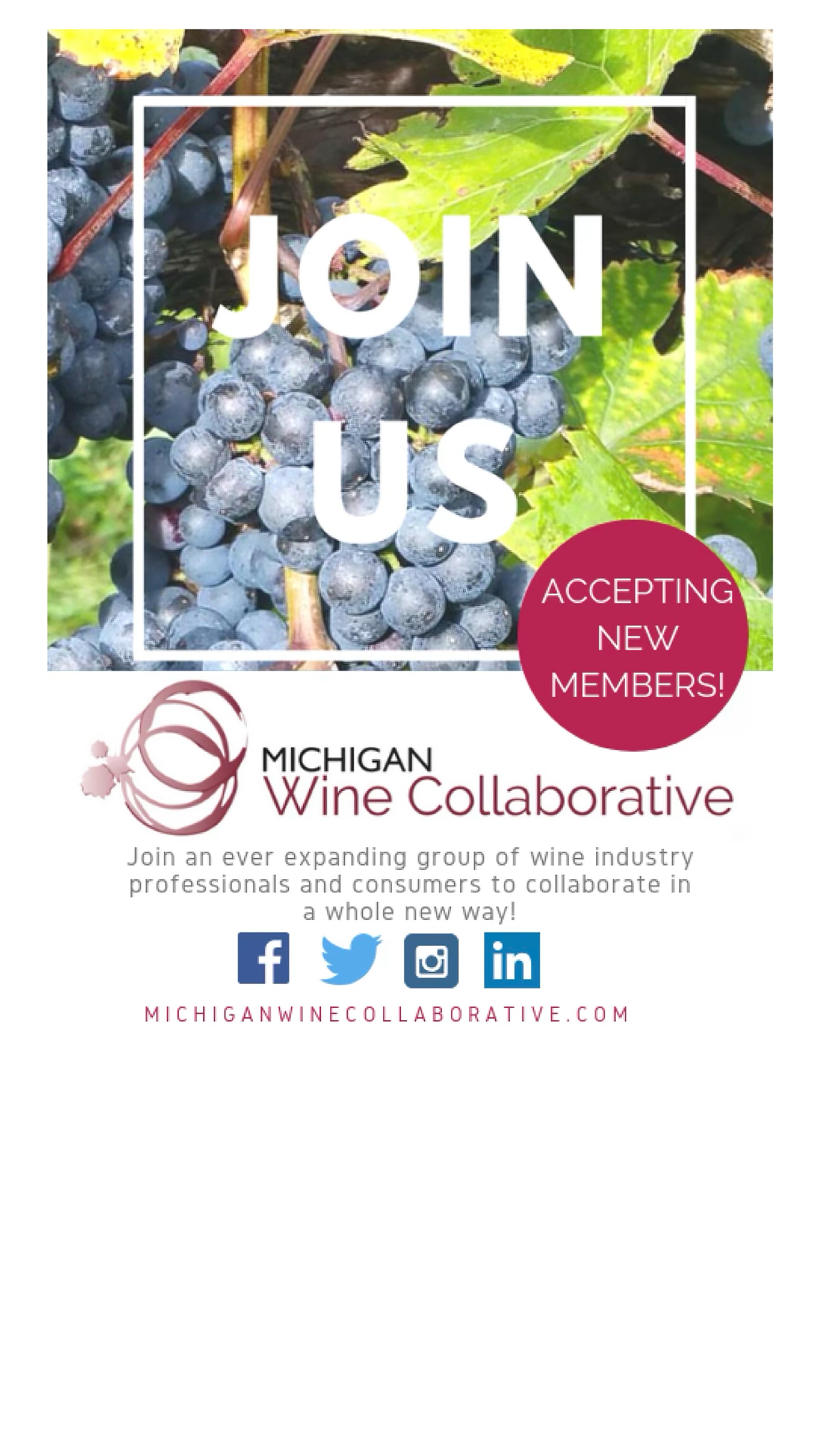michigan Uncorked



• SUSTAINABILITY • GOVERNOR’S CUP
• THINK LOCAL DRINK LOCAL • A LASTING IMPRESSION
• EASTERN MARKET INVADED • WOMEN IN WINE

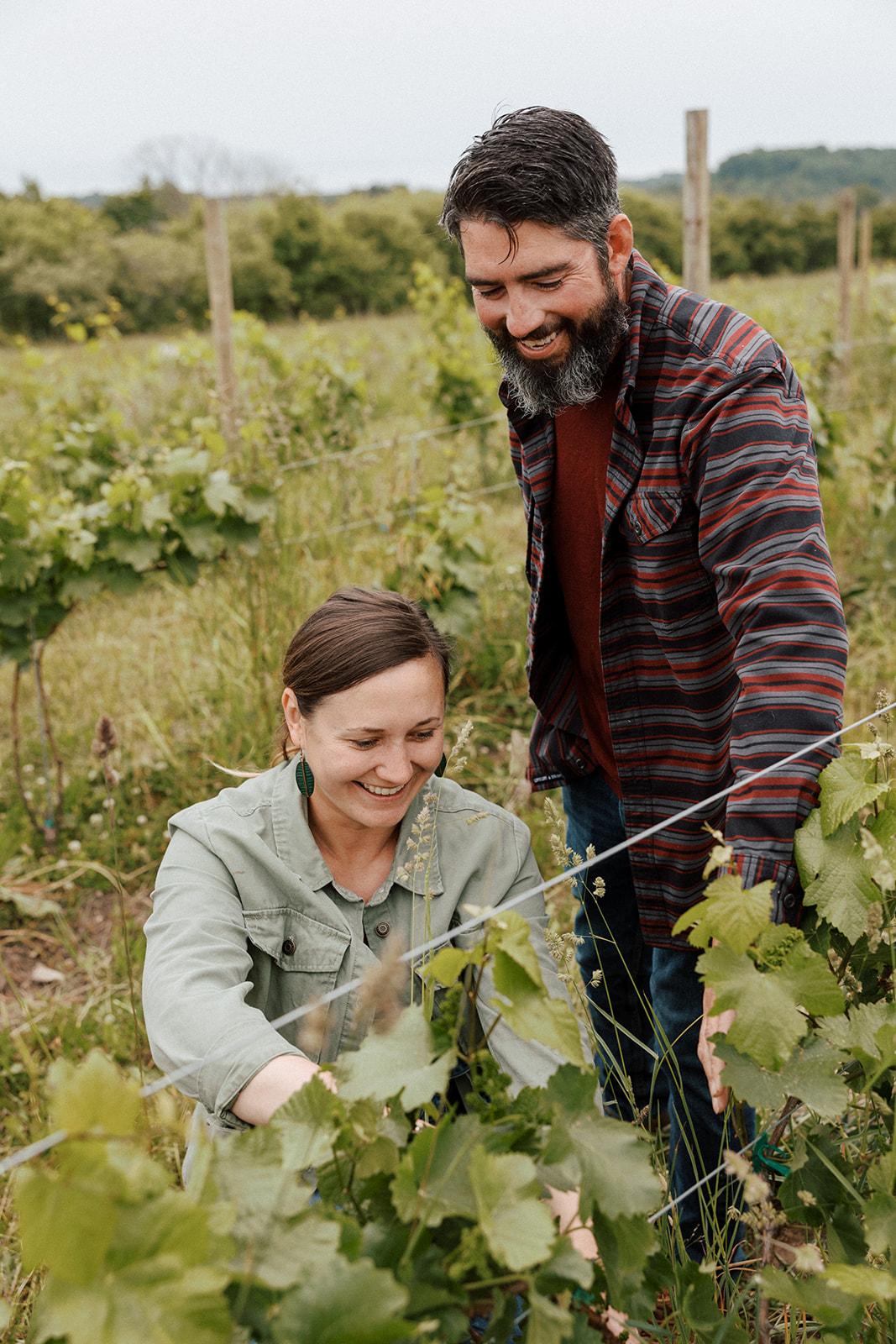




• SUSTAINABILITY • GOVERNOR’S CUP
• THINK LOCAL DRINK LOCAL • A LASTING IMPRESSION
• EASTERN MARKET INVADED • WOMEN IN WINE


www.michiganuncorked.com


Recently the state has picked up some serious momentum when it comes to refining their approach to sustainability.
The 2025 competition featured a minor rebrand which hailed the competition as the Taste Michigan Governor’s Cup and also launched a slightly altered logo.
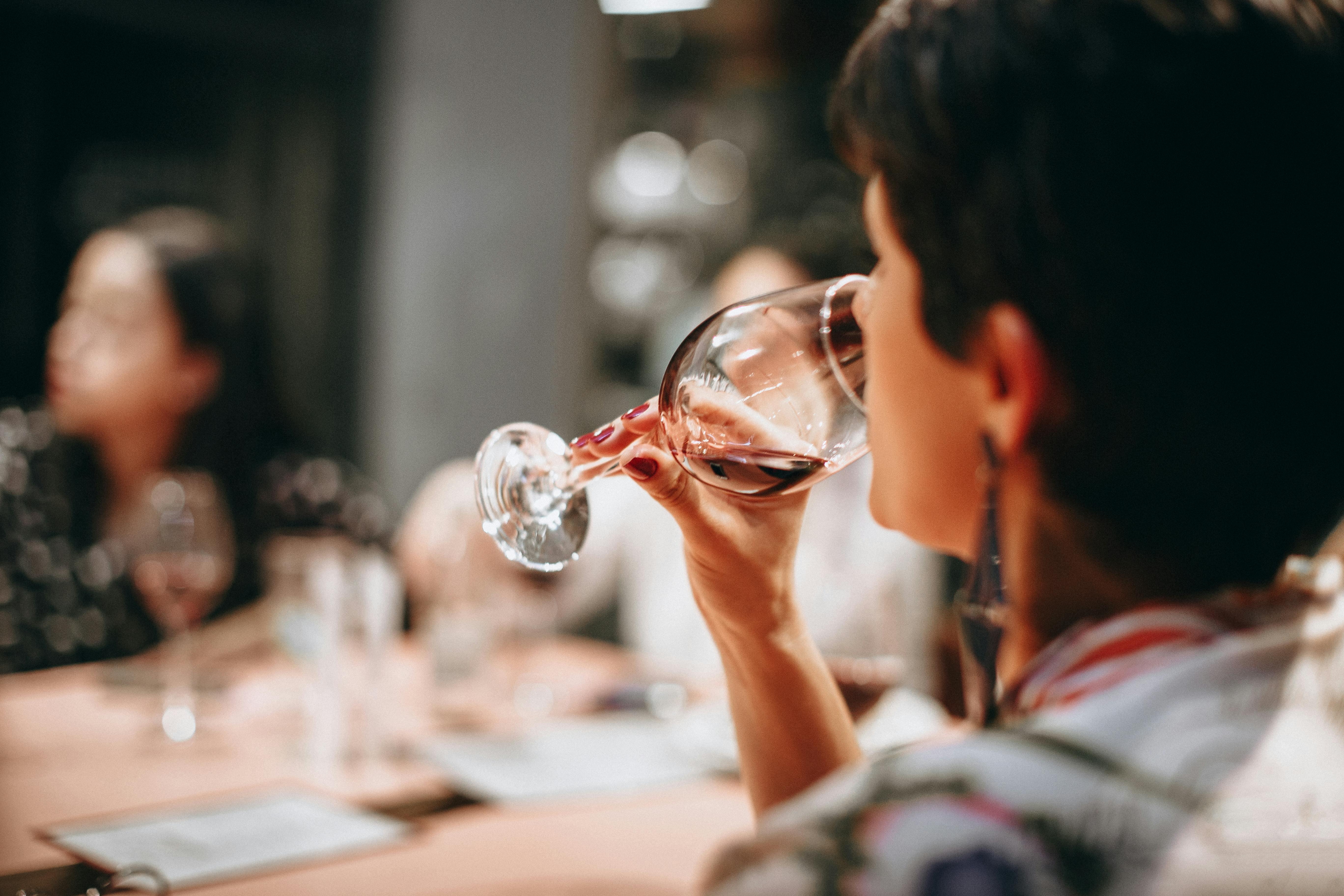
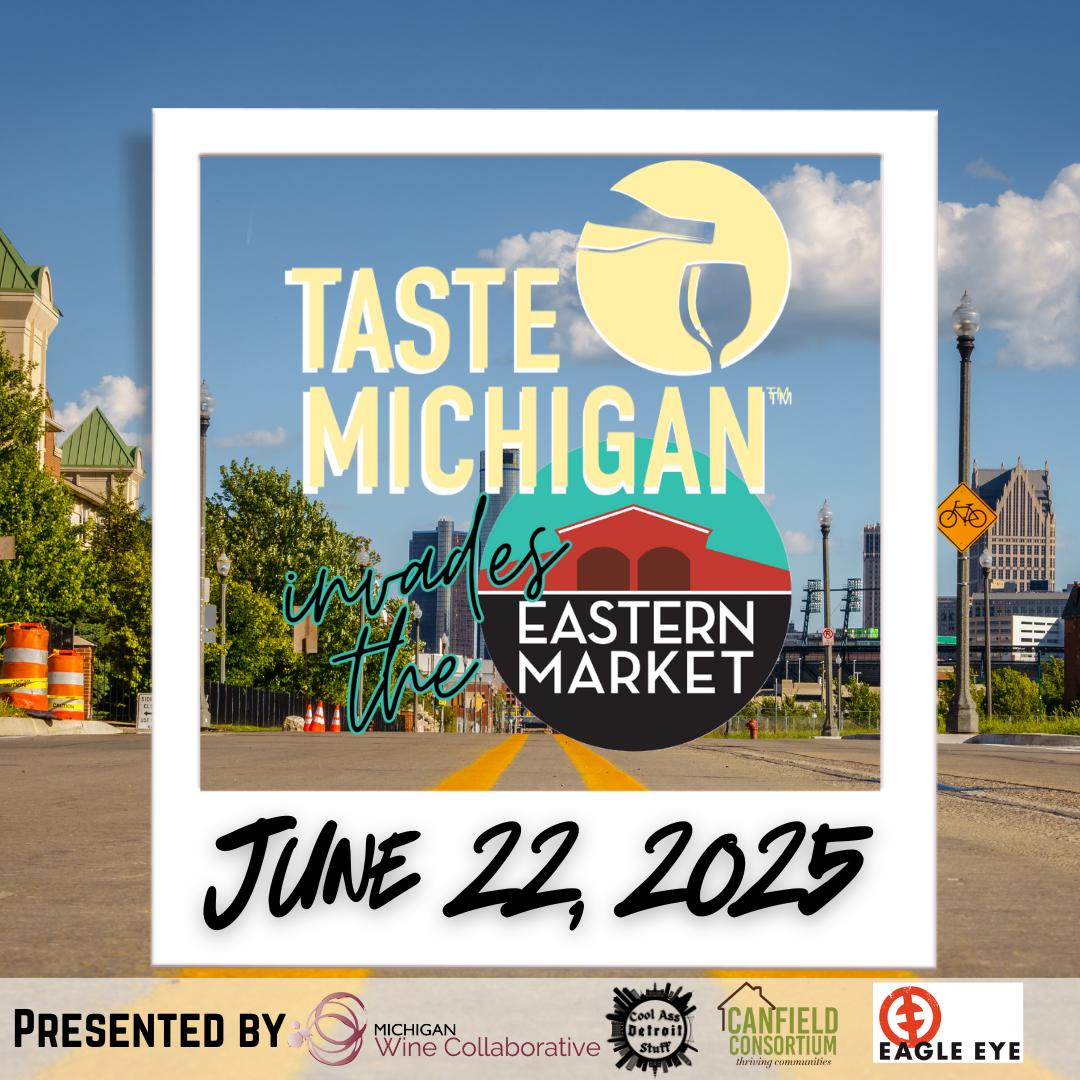

In Michigan, the wine sector – which includes 279 wine producers and myriad other wine-related businesses – generates around $8.96 billion in total economic activity for the state each year.
The finish and length of a wine, a measure of how long the pleasurable aspects persist after swallowing (or spitting) the wine, is one criterion used to assess its quality.
The Michigan Wine Collaborative (MWC) and Taste Michigan kicked off wine summer 2025 at the historic Eastern Market in Downtown Detroit this past June. +Where to buy wine nearby in this fall.
From vineyard rows to research labs, a new generation of female leaders is pouring fresh perspectives into the state’s thriving wine scene.
Sommelier Ellen Landis, CS, CSW shares her latest tasting notes on some of her favorite Michigan wines.
www.michiganuncorked.com
“Leaves are falling. Wine is calling.”
— Unknown
t’s fall and no better time than to reflect on how we got here — viticulture, winemaking and marketing. To this end, Emily Dockery serves up three articles — the first talks about sustainability in the state, which has recently picked up some serious momentum when it comes to this important approach to grape growing. The second article reflects on the Taste Michigan Governor’s Cup competition, which has some updates and improvements as a result of the experience and feedback from wineries over the previous two years. Emily’s third article features a summer event at the historic Eastern Market in Downtown Detroit this past June. The inaugural tasting event, Taste Michigan Invades the Eastern Market, brought 18 Michigan wineries together to pour wines for the patrons of the nation’s largest historic open air public market. To add some “juice,” we include some wineries nearby for fall tasting.
Erin Marie Miller has checked in with an article on how winemakers are coping in uncertain times (after contending with the effects of stubborn inflation in a post-pandemic entrepreneurial economy that still lags behind its Midwestern neighbors. Tariffs issued earlier this year also generated confusion – and a trade war – at the international level). M Marchak is sure to leave a lasting impression — she talks about how wine finishes on the palate and the length of time that experience occurs as part of assessing the quality of a wine. We welcome Lisa Conley-Kendzior to MU. Lisa writes about the some of the women behind the wine — the trailblazers as well as some newer to the scene.. And, as always, our in-house sommelier Ellen Landis, CS, CSW provides her special brand of tasting notes for Michigan wines. Cheers.

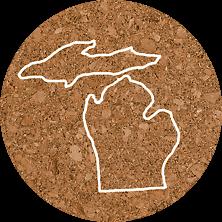
Editor-in-Chief Jim Rink • Associate Editor Kim Schneider • Associate Editor Greg Tasker Executive Secretary Karen Koenig-Rink • Contributing Writers Lisa Conley-Kendzior, Emily Dockery, Ellen Landis, CS, CSW, Erin Marie Miller and Jessica Zimmer
michiganUncorked Vol. 7 No. 3 Fall 2025
Copyright © 2025 by michiganUncorked, LLC Reproduction or use of the editorial or pictorial content without written permission is prohibited. Editorial Office, Jim Rink 20020 Maple St.,Lake Ann MI 49650, editor@michiganuncorked.com Unsolicited manuscripts or other information will not be returned unless accompanied by return postage. Website: www.michiganuncorked.com

by EMILY DOCKERY
Sustainability is a huge topic among the wine industry. It’s also one that is heavily debated while being highly regarded. In winegrowing things like spray programs, cover crops, livestock incorporation, and a slew of other responsible farming practices and methods are being widely adopted, adjusted for site, and promoted through a number of organizations and certifications. However, sustainability is not a one size fits all concept. Depending on region and climate, terroir can vastly vary but within those variances lies character and identity. When it comes to an emerging wine region, developing character and identity can be everything.
Michigan is one of those emerging wine regions searching for its place in the wine world and developing an identity when it comes to the varieties being grown, winemaking styles, and approaches to sustainability in both the vineyard and the cellar.
Home to the nation’s third oldest AVA, Fennville, Michigan is not a new player in the American wine world. However, it has taken time for Michigan to develop and craft an identity reflective of its wine culture and terroir. Recently the state has picked up some serious momentum when it comes to refining its approach to sustainability.
There are many pioneers in the state when it comes to innovations within Michigan viticulture and sustainability. A newer player on the scene hails from that tiny but mighty, and long established AVA, Fennville. Modales Wines has officially become the first certified organic vineyard in the state of Michigan. We connected with winemaker at Modales and Michigan Wine Collaborative Vice President, Andrew Backlin, to get his perspective on sustainability in Michigan wine.
MU What was the process like converting the farm to certified organic?
AB Converting to certified organic farming is a long, rigorous process. To even apply for certification, a vineyard must be farmed organically for three full years beforehand. For us, that transition began in 2021, when we stopped using conventional fungicides and herbicides and fully committed to organic practices.
That meant switching to organic-compliant fungicides and integrating things like compost teas for disease control. We also had to rethink how we feed our vines. In conventional Michigan viticulture, synthetic nutrients are the norm, but

Continued on next page
organic standards prohibit them. Instead, we plant diverse cover crops—like legumes—that naturally fix nitrogen and improve soil health over time.
Without synthetic herbicides, we now rely on a combination of mechanical cultivation and rotational grazing with sheep to keep vineyard floor competition in check.
After three years of organic practices, we underwent a comprehensive audit of both our vineyard and winery. Every aspect of our farming system was reviewed in detail to ensure we met the stringent standards for organic certification. It was a demanding process, but one that has deepened our connection to the land and the integrity of our wines.
MU Were there any particular influences you looked to as you developed your sustainability program?
AB One of our most valuable mentors has been Dave Bos of Bos Wines. Dave’s experience as the former viticulturist at Grgich Hills in Napa—one of the largest certified organic and biodynamic wineries in the U.S.—was instrumental in helping both myself and our vineyard manager understand how these practices could translate to a Midwestern climate.
Internationally, we’ve drawn a lot of inspiration from producers like Nicolas Joly in the Loire Valley, who pioneered biodynamic farming in a modern context. We've also learned from the broader sustainability movements in Germany, Austria, Italy, and France—especially where university research and grower innovation are driving practical, science-based approaches to regenerative farming.
In many ways, we’ve built our sustainability program as a patchwork of proven global practices, adapted thoughtfully to our local context here in southwest Michigan.
MU What were some of the biggest adjustments that needed to be made in the vineyard? Did these adjustments affect any cellar practices?



AB The biggest shift was changing our entire approach —from being reactive growers to becoming proactive stewards of the vineyard. In conventional farming, you can rely on systemic fungicides that act curatively, so there’s more room to wait and respond. But with organic farming, almost everything is preventative. If you miss your window, there’s no chemical fix waiting in the wings.
That means we now walk the vineyards three to four times a week, treating each block and each variety as its

Continued on next page
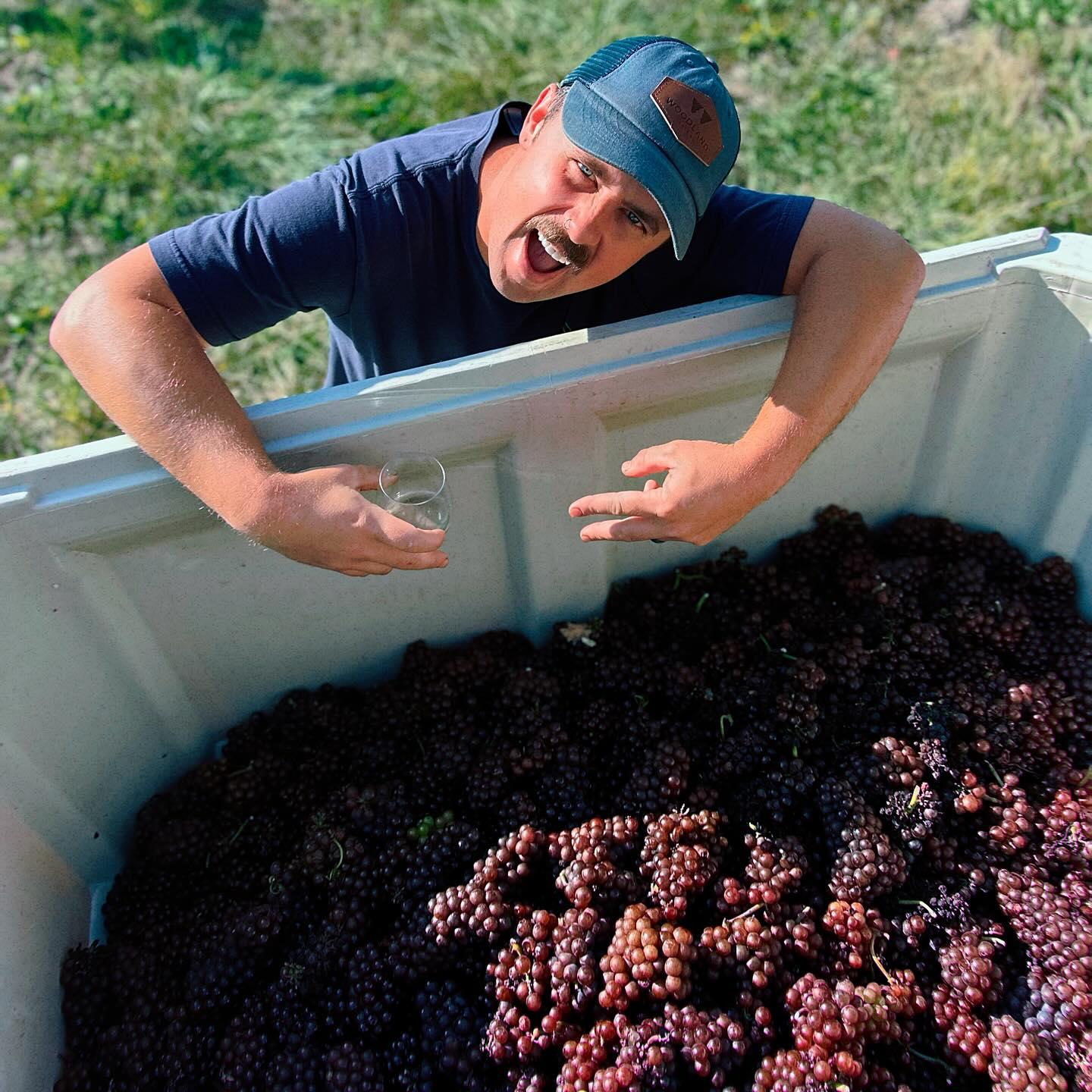
own ecosystem. We no longer take a blanket approach. We monitor, assess, and act early—before problems arise.
Another major adjustment was shifting our perception of what a “beautiful” vineyard looks like. In conventional viticulture, there’s often a desire for everything to look manicured—golf course aesthetics with spotless undervine strips and tidy rows. But with organic farming, we’ve learned to embrace a more natural beauty. We welcome biodiversity, the presence of insects, cover crops, and the occasional controlled chaos. A “wild” vineyard is often a healthy one.
As for the cellar, aligning with our organic certification has reinforced and sharpened our philosophy. We’ve always aimed to be a low-intervention winery, but now we’re even more committed. Organic certification limits what we’re allowed to use in the winery—there are no shortcuts or curative additives. So it all starts with healthy, vibrant fruit. If we don’t get it right in the vineyard, there’s no saving it later. This tight integration between farming and winemaking keeps us grounded in our values and focused on transparency and purity in the final wines.
MU What are some challenges farming organically?
AB We sit in a humid, lake-influenced region with regular rainfall throughout the growing season. That moisture creates the perfect conditions for fungal pressure— especially black rot, downy mildew, and powdery mildew —which can be relentless without the curative tools available in conventional farming.
Because organic-approved products are largely preventative and less persistent, timing becomes everything. We’re constantly watching the weather and adjusting our spray schedule to stay ahead of potential outbreaks.
There’s also the reality that there’s not much of a blueprint for organic viticulture in our region. We’re learning in real

Continued on next page

time, adapting practices from other parts of the world and translating them to our specific climate and soils. We’re not just farming grapes; we’re helping shape what sustainable viticulture looks like in the Midwest.
MU What is some advice you would give other vineyards looking to convert to organic?
AB One of the biggest pieces of advice I can offer is to start by observing your site more closely than ever before. Organic farming isn’t about swapping one set of products for another —it’s about building a deeper relationship with your vineyard. You’ll need to become a student of your soil, your canopy, your air flow, and your disease pressure. Walk your blocks regularly. Learn how each variety responds to the rhythms of your specific site.
Another key point: build your system before you need it. In organics, you can’t wait for problems to show up—you have to be ahead of them. That means investing in tools like canopy management, biodiversity, composts, and preventative sprays well before there’s visible disease.
Also, don’t try to do it alone. Talk to other growers, even if they’re outside your region. Look to examples in Europe or other cool, wet climates, and adapt those ideas to your context.
And finally—embrace the mess. Organic farming can look a little wild, a little less polished. But that’s part of the beauty. When you start working with nature instead of against it, you’ll find not only more resilient vineyards, but wines that tell a much more authentic story.
Traveling north from the state’s oldest AVA we searched for insight from the newest, Tip of the Mitt. Folklor Wine & Cider are committed to stewarding their vines and land in such a way that secures a legacy for the region. Iza Babinska and partner Derrick Vogel display an incredible passion for community, stewardship, and transparency. We asked Iza to give us some insight into the farming philosophy at Folklor.
MU What is the main mission behind Folklor's commitment to stewarding the land?
IB We think a lot about sustainability through the lens of genetic diversity, both through cultivar selection and what we are growing alongside our wine grapes. As of 2025, we grow approximately 60% vinifera and 40% hybrid cultivars, focusing on fungal resistant varieties. We have five different hybrid breeding programs represented in our planting, which in 2023 included the addition of Muscaris, one of the fungal-resistant PIWI varieties.
We also spend a lot of time and resources on our cover crops in the vineyard and even directly under the vines. We have a few different blends of cover crops that consist of low growing grasses, legumes, and forbes. We hand weed directly under the vines which is very time consuming but it is helping us to accomplish the following goals: naturally build organic matter, maintain carbon stores, help build an incredibly diverse soil microbiome that will hopefully create a more natural system of nutrient cycling.
We've been disappointed and frustrated by the greenwashing and lack of transparency that occurs in the wine industry. That really motivated us to pursue organic certification for both our vineyards and winery. We are currently working with the Midwest Organic Services Association (MOSA) on certification. We have been farming using all organic practices since 2021 and decided that committing to certification was important both as a way to hold ourselves accountable and make a promise to our customers. While the organic certification certainly isn't perfect, it's widely recognizable by consumers and can be a basis for further farming practices that prioritize the health of the land and people working on it.
MU What are some methods or practices that you began your farming journey with and what are some newer additions to your farming program?
IB When we were first starting out, we wrote ourselves a
guiding principle of "vineyard first" as a way to prioritize our time, our resources and our approach in the cellar. Our goal is always to grow the best possible fruit and do as little to it in the cellar as possible on the way to bottle. That started out with some simple things we wanted to incorporate into or exclude from our practice: never any herbicide, limited tillage, incorporating native plants into our cover crops in the fields; never chaptalizing or adjusting for acid, focusing on blending for balance, and co-fermenting grapes with the other fruits growing on the farm in the cellar. In a few short years, that has evolved into farming in a way that feeds the soil rather than the plant, stewarding the whole farm ecosystem, and shifting to nearly all native yeast fermentation as of the 2024 vintage in what we hope is the truest expression of place.
MU Are there any influences that Folklor looked to while establishing farming practices?
IB We have been inspired by producers who bridge their viticulture and winemaking with ecology and a deep desire to express terroir in their wines. Some of those folks include Mimi Casteel of Hope Well Wine and Vineyard in Oregon, Dierdre Heekin of La Garagista in Vermont, James Milton of Milton Vineyards in Gisborne, New Zealand, and Christina Tiberio of Agricola Tiberio in Abruzzo, Italy. Listening to interviews with these producers and tasting some of their wines sent us down research rabbit holes and inspired us to think about how we want to approach our own viticulture and winemaking.
MU Has Folklor's farming practices inspired or impacted any of its neighbors? What do you hope Folklor's legacy will be?

We certainly hope so! Derrick provides vineyard management consulting services to the area. This is a great opportunity to encourage our fellow growers to rethink their growing practices. We feel like the best way we can inspire others is to have the results show up in the wines and prove that the way that we farm is financially viable.
We also feel very strongly about sharing resources and creating opportunities for folks interested in pursuing their own careers and wine businesses here in Michigan. One of our short-term goals is to start an apprenticeship program to provide hands-on learning opportunities in the vineyard and the cellar, and help position folks to qualify for programs like the USDA's Beginning Farmer Loan.
By planting a perennial plant like grapevines and just beginning the work of building soil, we feel like the work we are doing now is laying the foundation for the next generation that will farm this land and make wine here. We hope we can not only lay the foundation of viticulture and winemaking here at Folklor, but also empower the next generation to pursue this extremely rewarding and fun work.
The passion shared by Modales and Folklor is palpable and contagious. This energy is essential to infusing a culture of sustainability into the Michigan wine industry and inspiring other farms to adopt more sustainable farming practices which can ensure the health of the land and the vines while producing quality wine. Furthermore, cultivating awareness among wine consumers instills accountability on the wine industry at large which can subsequently ensure that the business stays sustainable as well…and our glasses stay full.
Emily Dockery is the Executive Director for the Michigan Wine Collaborative, http://michiganwinecollaborative.com/. She also co-chair of the Inclusion & Expansion Committee and has extensive experience in the retail wine sales industry and is a graduate of the Lake Michigan College enology and viticulture program.




by EMILY DOCKERY
Over the Spring of 2025 the Michigan Wine Collaborative (MWC) and Taste Michigan hosted the third annual Taste Michigan Governor’s Cup Competition. The 2025 installment of the statewide event offered some updates and improvements as a result of the experience and feedback from wineries over the previous two years. The 2025 competition featured a minor rebrand which hailed the competition as the Taste Michigan Governor’s Cup and also launched a slightly altered logo.
The rebrand was an effort to further increase the momentum and awareness of the state’s newest wine brand, Taste Michigan, which is committed to promoting the entire state’s wine industry regardless of membership or affiliation to groups like MWC, wine trails, recognized AVAs, and others. Taste Michigan has the mission of advocating, educating and inspiring people about all things Michigan wine. From teaching people about the wine grapes that grow particularly well in Michigan’s unique geography and climate to helping them find the best of Michigan wine at tasting rooms, stores and restaurants, throughout the state, Taste Michigan is designed to be a guide to exploring and experiencing the best of Michigan’s world-class wine culture. Taste Michigan’s biggest initiative includes marketing and promotion of the Michigan wine industry so wrapping up the statewide wine competition under the brand was a no brainer.
Other improvements within the 2025 installment included enhanced education and communication with the judging panel and entity of Bev Test, formerly the Beverage Testing Institute. Michigan wine can be a category within the wine industry that is often misunderstood due to the unique terroir and winemaking styles featured across the state. Creating an open line of communication during the judging process was essential to ensuring that wines were properly evaluated based on varietal correctness of cool climate grown wines and to provide an understanding of Michigan wine culture. While it is also important to judge wines entered in the competition within the construct of a classic approach, it is also important to understand how climate and terroir can shape a varietal. As many of us know, a Marlborough Sauvignon Blanc is often a much different experience than a Sancerre from France just as an Italian
Primitivo differs greatly from an Amador Zinfandel. As an emerging wine region, Michigan is faced with challenges when it comes to the global wine industry gaining an accurate perception of what exactly Michigan wine is and what the style represents. Cool climate winemaking is a significant contrast to the warmer climate styles that places like California and Australia are famous for and wine drinkers may be more familiar with. Because of these considerations and differences, having a more intimate relationship with the individuals behind evaluating the wines of the Taste Michigan Governor’s Cup is a necessity as Michigan works to raise awareness and provide education about its very unique wine industry.
The spread of awards in the 2025 competition was inclusive. The winners of the ‘Best of Class’ and ‘Governor’s Cup Case’ awards were an equitable representation of wineries from across the state. With regions represented from the Leelanau AVA to the River Raisin Wine Trail, the 2025 awards is a testament to the premium wines being produced in every corner of the Mitten state.
The full line up of the Best of Class winners included:
Vinifera Red: Cherry Creek Cellars 2023 Charamar Collection / Pinot Noir (O fficial 2025 Taste Michigan Governor’s Cup winner and Platinum Medal awardee)
Vinifera White: Golden Muse Winery 2023 Nadar Chardonnay (Gold Medal)
Hybrid Red: White Pine Winery NV Dune Shadow Red Blend (Gold Medal)
Hybrid White: French Valley Vineyard 2023 Vignoles (Gold Medal)
Fortified: St. Julian NV Solera Cream Sherry (Gold Medal)
Sparkling: MAWBY NV Grace Brut Rosé (Platinum Medal)
Rosé: Verterra Winery 2024 Rosé of Cabernet Franc (Gold Medal)
Sweet/Dessert (R.S. ≥5%): Bel Lago 2023 Late Harvest Riesling (Gold Medal)
Cider: Two K Farms NV Harrison Cider (Gold Medal)

The Best of Class awards went to the highest scoring wines within each category. These wines represented the most varietally correct and well balanced of the over 150 entries from over 30 Michigan wineries. In addition to the prestigious Best of Class awards, there were also the Taste Michigan Governor’s Cup Case inductees. These selections represented the five most highly scoring white wines and red wine as well as the highest scoring sparkling wine and rosé. The 2025 Taste Michigan Governor’s Case included:
Cherry Creek Cellars 2023 Charamar Collection Pinot Noir
Lemon Creek 2021 Reserve Cabernet Franc
Peninsula Cellars 2021 Vintner’s Select Reserve Red
Two K Farms 2021 Bellenoir Red Blend
White Pine NV Dune Shadow Red
Chateau Fontaine 2023 Wall of Goats Sauvignon Blanc
Chateau Fontaine 2024 Chardonnay/Gewürtztraminer
Golden Muse 2023 Nadar Chardonnay
BigLittle Wines 2022 Mixtape White Blend
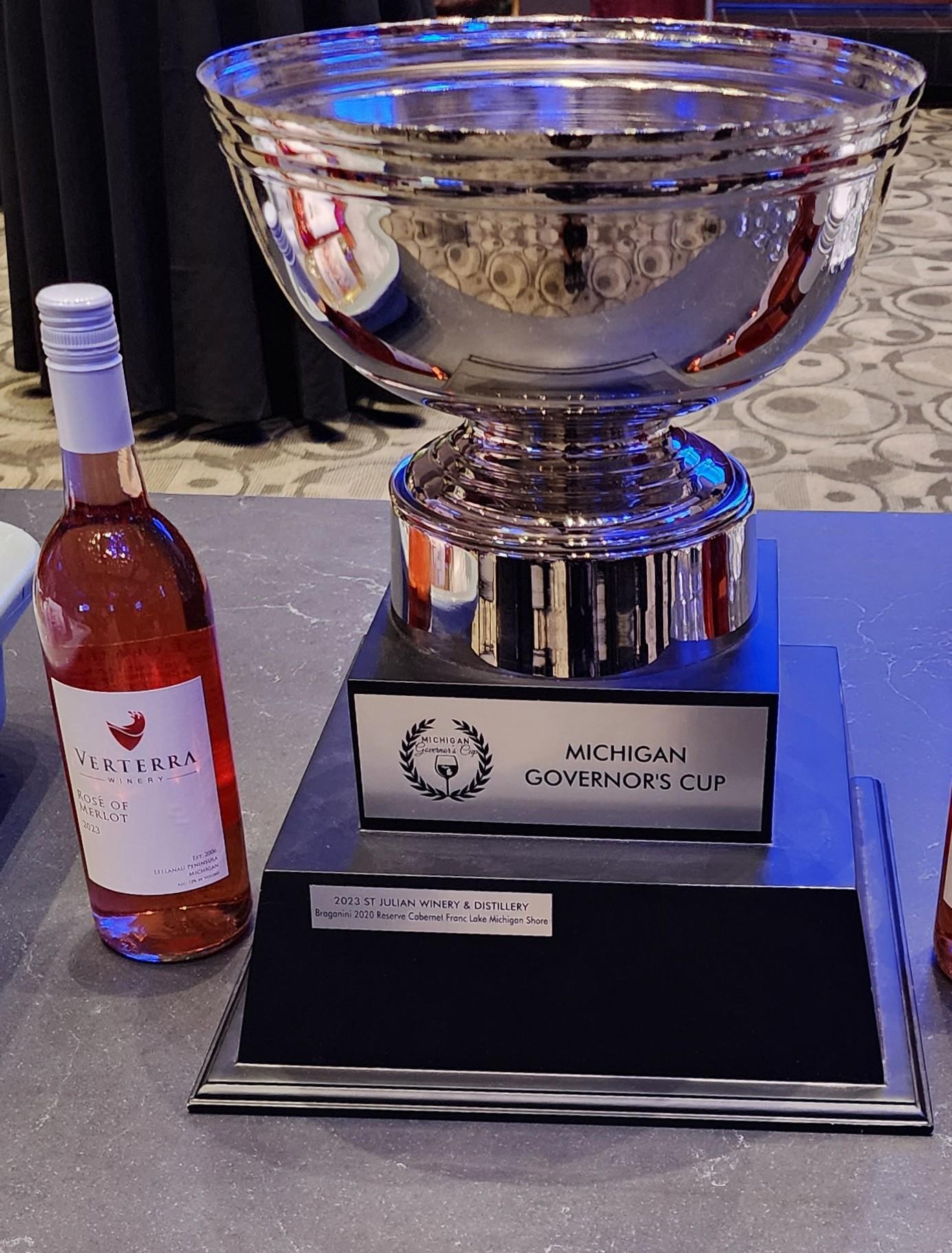
Cherry Creek Cellars 2023 Charamar Collection Kerner
MAWBY NV Grace Brut Rosé
Verterra Winery 2024 Rosé of Cabernet Franc
Now that the results are in, the Michigan Wine Collaborative has big plans for promotion of the winning wines and for the Taste Michigan brand. Throughout the summer and beyond MWC will be coordinating events and placements with restaurants and retailers across the state, coordinating media and press opportunities to showcase the winners, and of course executing the annual Taste Michigan Governor’s Cup Award Ceremony and Celebration at the 2025 Grand Rapids International Wine, Beer, and Food Festival this November.
The November showcase will feature an award ceremony where the prestigious Governor’s Cup trophy will be transferred from its previous home at Verterra Winery to its new place of residence at Cherry Creek Cellars for the year. Additionally, Taste Michigan will be hosting a booth at the festival where attendees will be able to taste through some of the winning wines and meet the growers and makers from the winning wineries. There will also be curated pairing events where chefs will pair the winning wines with a selection of themed small plate experiences. MWC and the organizers of the Grand Rapids International Wine, Beer, and Food Festival are in the process of expanding upon the event programming of this year’s festival to include an expanded selection of experiences for attendees to explore the winning wines and wineries and learn more about the Michigan wine industry.
Outside of the activities and programming mentioned above, MWC will also be developing a sort of passport or scavenger hunt for Michigan wine lovers to collect all twelve of the wines from the Governor’s Cup case. Those who complete the challenge will be entered in a drawing to win experiences from wineries across the state, Michigan wine swag, Vintage Michigan premium memberships, and more.
The hope of the MWC is for the Taste Michigan Governor’s Cup awards to be a conduit for both the trade and for consumers to be able to support and celebrate the annual competition and the winning wineries. Alternatively, this is a strategy to build a following behind the newest iteration of the statewide competition in order to expand upon the concept and evolve it into something even better and more exciting. Wine competitions can be a successful marketing tool for the individual wineries but also for trade organizations and wine associations to increase demand for wines that perform well.
To learn more about the 2025 Taste Michigan Governor’s Cup and view the entire list of awards visit TasteMichigan.org/ taste-michigan-governors-cup-competition.

Emily Dockery is the Executive Director for the Michigan Wine Collaborative, http://michiganwinecollaborative.com/. She also co-chair of the Inclusion & Expansion Committee and has extensive experience in the retail wine sales industry and is a graduate of the Lake Michigan College enology and viticulture program.

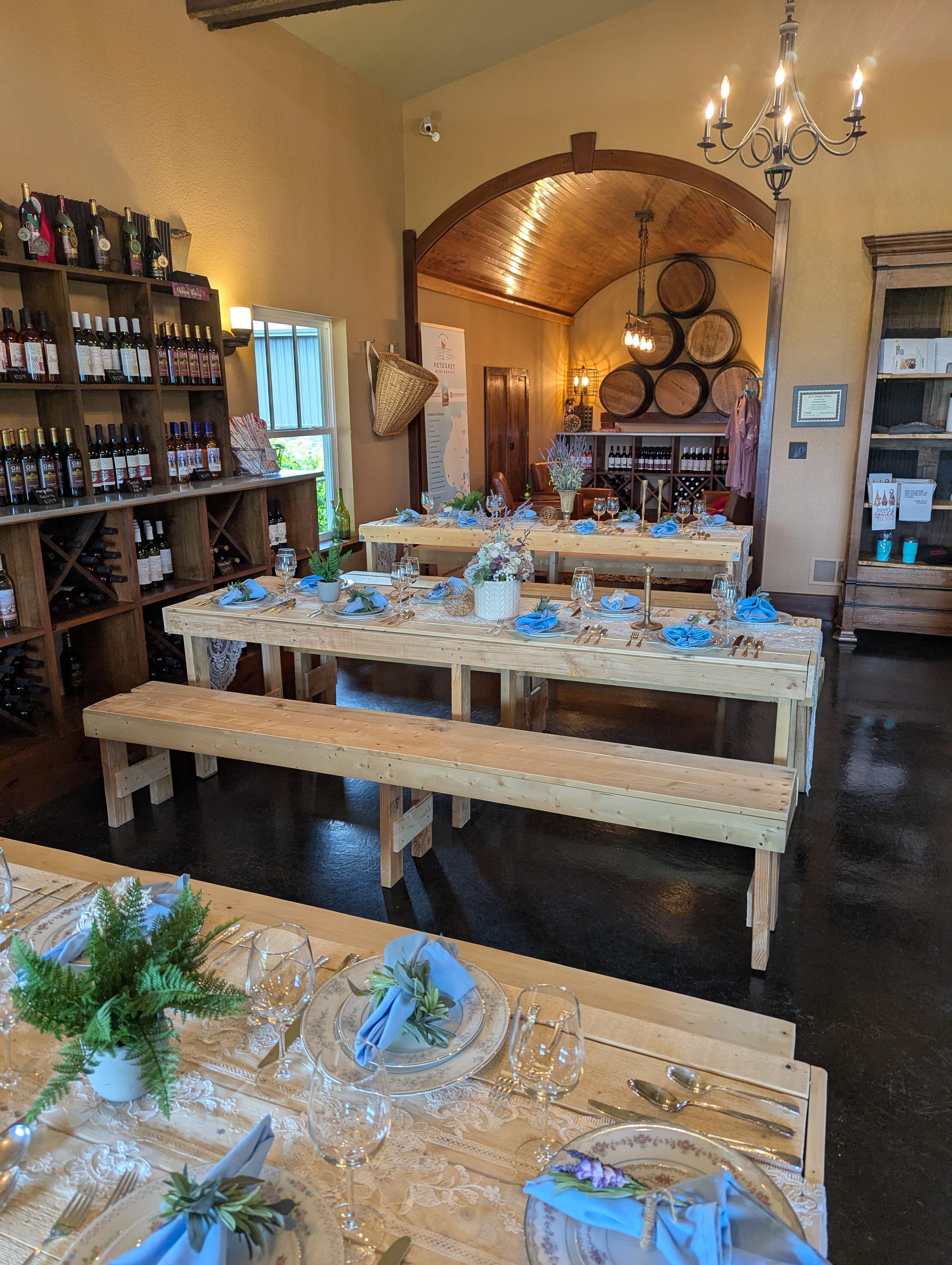
by ERIN MARIE MILLER
or winemakers in Michigan, the last few years have been anything but easy. After contending with the effects of stubborn inflation in a postpandemic entrepreneurial economy that still lags behind its Midwestern neighbors, tariffs issued earlier this year generated confusion – and a trade – at the international level. With stop-and-go levies disrupting partnerships and affecting the of imported French oak barrels, bottles, corks and more, the cost of producing wine in America has increased, even as demand continues to wane.
“What we're seeing now is unprecedented, because we have several other external pressures (beyond normal business challenges) that we don't necessarily have easy control over,” says Brian Lille,

Continued on next page
vice president of hospitality and distribution at Chateau Chantal in Traverse City, Michigan, and president of the Michigan Wine Collaborative, a nonprofit that advocates for businesses and professionals in the state’s wine industry.
In Michigan, the wine sector – which includes 279 wine producers and myriad other wine-related businesses –generates around $8.96 billion in total economic activity for the state each year, according to data from Wine America’s 2025 Economic Impact Study. But despite those impressive numbers, some of the state’s producers have found themselves cornered in recent years by setbacks, obstacles and uncertainty.
“I think what happens is, many people believe that wineries are a bunch of gazillionaires that are doing this as a tax shed of sorts, when in reality, what you have are hundreds of small businesses,” Lille says.
For many of those businesses, friction points can range from labor shortages and cashflow problems to production obstacles, volatile weather, shifting consumer preferences and a maze of laws and regulations, according to a nationwide survey conducted in part by viticulture and enology experts from Michigan State University Extension last year – challenges that can be both difficult and expensive to navigate, especially for smaller producers.
“It takes a lot of crystal balls and planning and being able to interpret what may or may not happen in the future. So, without even talking about dollars and cents, those are some of the pressures that we’re dealing with. And then when we start to add things like tariffs or things like consumer behavior, those that are not well positioned can be thrown into a tailspin, frankly. And you’ll see businesses start to fold or go up for sale, or vineyards being unkept because they can’t afford to farm the grapes,” Lille says.
Despite the extraordinary challenges the state’s wine industry faces as it heads into winter, some producers are still finding ways to pivot and continue making the exceptional wine the Third Coast built a reputation on.
“Any which way you look, costs have gone up. And you know, you have to deal with it – either by sucking it up or ultimately having to raise your prices or cutting back. It’s just simple economics,” says Eddie O’Keefe, president and coowner of Chateau Grand Traverse in Traverse City, Michigan.
Although the winery hasn’t been directly affected by tariffs so far, O’Keefe says costs related to labor, packaging and shipping have all increased in the last several years. While the business has absorbed some of those expenses, management also took steps to mitigate their impact, including assessing wine sales and crop levels, and making plans to remove underproducing vineyard blocks and discontinue some underperforming products. To increase revenue, the winery has also focused on expanding outstate distribution, increasing wine club subscriptions, incorporating QR codes on packaging to educate consumers, and leaning into wine tasting experiences and live music while adding a variety of foods to the menu.
Still, O’Keefe remains concerned about other obstacles that can’t be confronted as easily, including messaging

from health authorities like the World Health Organization, which announced a global alcohol action plan last year to reduce alcohol consumption – something he worries could negatively impact sales while overshadowing the idea of enjoying wine in moderation with food and socialization.
“Although you can’t measure the benefit that you get from just unplugging and having a glass of wine on your back patio after a tough day, there’s something to be said about that,” O’Keefe says.
At Crooked Vine Vineyard in Alanson, Michigan, rising costs have also been a concern – not only for the winery, but also its customers.
“For the consumer, as the economy continues to become more and more expensive, our product as a winery, and an experience at a winery, becomes a discretionary or a luxury expense,” says tasting room manager Stephanie Milo, adding that guests have been spending less on wine purchases during recent visits than in previous years, often going home with a few bottles rather than cases of wine. Like its visitors, the winery has also felt the sting of rising costs, including the price of a popular souvenir wine tumbler that recently increased by 20% – an expense the business has absorbed for the time being.
“Bottle costs have increased. Labeling has increased – just the actual cost of printing labels has gone up. All of our other expenses to maintain and operate the tasting room are certainly taking a hit on our bottom line,” Milo says.
As part of its strategy for mitigating the higher costs of imported goods, Crooked Vine made it a priority to source products from Michigan whenever possible. While the winery can’t buy everything locally (Milo says their bottles and glassware currently come from Mexico), it has built support for other local businesses into its operations. Still, amid industry-wide struggles, Milo remains concerned about the future – and the state’s new minimum wage law, which went into effect earlier this year and is slated to incrementally raise Michigan’s minimum wage from $12.48 to $14.98 by 2028. To stay competitive and keep staff, Milo says Crooked Vine upped its hourly wage to $18 this year, though she worries future raises could be challenging due to increasing business costs and waning sales.
At Modales Wines in Fennville, Michigan, labor has also been a concern – in particular, finding workers with the skills to produce high-quality wines in Southwest Michigan’s premium winemaking industry. “I think many people think that, because we are in the Midwest, there is a lower cost of goods to produce (wine), when it’s actually the opposite. We don’t have the same labor pool that, say, California does,” says head winemaker Andrew Backlin, who is also the vice president of the Michigan Wine Collaborative, adding that the small winery isn’t positioned to bring in temporary agriculture workers under the often expensive and complex H-2A visa program.
Competition with other regions is also fierce. Citing data from the 2024 USDA National Agricultural Statistics Service California Preliminary Grape Crush Report, Backlin points out that white grapes sold for an average of $733 per ton in California in 2023 – a number he says Michigan producers can’t compete with.

“We can’t even farm a ton of grapes for that,” Backlin says, adding that the same amount of vinifera in Michigan could potentially cost up to $1,800.
To stay competitive and meet consumer demand, Modales Wines recently obtained organic certification. The winery has also leaned into efficiency, market segmentation and brand storytelling to appeal to a new demographic of wine drinkers in larger metropolitan markets – something Backlin hopes will differentiate the small winery.
But because wine regions in the European Union are subsidized, it's often difficult for Michigan’s wineries to compete with imports due to higher costs and price points. Backlin says the added expenses of freight, storage, occasional lost harvests and imported items like corks add to the challenges – especially in the wake of recent tariffs.
“Corks are mainly made in Portugal and in Spain. If we want to have a custom branded cork, then we’ve already had tariffs applied on it,” Backlin says, adding that the winery’s most recent cork order increased by around 10% compared to the one before it, despite having been placed before tariff time.
Amid a constellation of challenges, finding solutions and planning for the future are often easier said than done for the state’s wine producers.
At Chateau Chantal, Lille says the winery recently added nonalcoholic products to its lineup of award-winning wines in a nod to shifting consumer attitudes about alcohol, despite its higher production costs – although solutions to other problems remain elusive.
“The easy answer … is to save on labor and cut expenses, right? Well, how do you do that? You know, are we going to offer less quality service in our tasting room? Are we going to farm less in the vineyard? Are we going to buy cheaper glass? I don’t know if that’s even feasible in the wine business right now,” Lille says. Still, there’s one thing Lille says can help the state’s wine industry, now and in the future: support from local wine drinkers and businesses.
“If you go to France – Burgundy, Bordeaux, Loire – they're supported by their biggest city in Paris. If you go to the Bay Area, to Napa or Sonoma, they're supported by their biggest metropolitan area. And if you go to Michigan and you look at a wine list, you're supporting France and California. So, being able to get support locally is one of those things that we are hoping to achieve with Michigan,” Lille says.

Erin Marie Miller is a freelance journalist based in Metro Detroit. A lover of all things independent, she has written about small businesses, restaurants, non-profits, the arts and more for publications in Michigan and California since 2014.



nishes on the palate and the length of time that experience occurs is part of assessing the quality of a wine. How important that specific assessment is to our experience in tasting wine may differ pragmatically.
Try this next time you open a bottle. Taste the wine, swirl it in your mouth, and bring in a little air while you taste. If you are not entirely engaged in discussing the aromas and flavors as well as the acidity, alcohol level, body and tannins, then jump to the conclusion. How long do the pleasurable aspects of that wine linger on your taste buds? Count in seconds or minutes if the wine so delivers. Each wine conveys a distinct experience.
The finish and length of a wine, a measure of how long the pleasurable aspects persist after swallowing (or spitting) the wine, is one criterion used to assess its quality. In the Wine Spirits Education Trust (WSET), budding wine professionals taste wine and learn to evaluate it by assessing the wine’s pleasurable flavors on the palate after swallowing and determining how

Continued on next page
long those flavors last as part of a mnemonic called BLIC (Balance, Length, Intensity, Complexity). If the pleasurable flavors last a few seconds, the finish is considered short, 5-10 seconds is medium and anything after is long, typically 10-15 seconds or more. A longer and more intense pleasurable finish means a more complex and potentially higher-quality wine. It is the last connection to the taste of the wine to form a conclusion. So that’s the theory.
Practically for most individuals, the finish of a wine is often subjective, based on the style sought for the experience that transcends the length of the flavors. A left bank Bordeaux has a lengthy finish of the red and black fruits, purple flowers, cedar, baking spices, sweet tobacco, mushrooms and/or eucalyptus that is mesmerizing. Yet very strict standards are followed in Bordeaux to produce this style of wine, at a higher cost to the consumer. Aging wine will contribute to the length of the finish but requires waiting time. If the experience you seek will not accommodate a higher cost and time for cellar-aging, options are available. Wine has many remarkable experiences and different styles of wine provide quality encounters. Those subjective experiences may affect how we perceive the quality of wine.
A wine with a short finish does not automatically imply an inferior wine. Consider the wine being tasted in the social and cultural milieu. If the wine is youthful, with a fresh fruity taste, and is paired with shrimp tacos in a backyard, such as a Vinho Verde, the finish may be short but subjectively provides quality for the price, taste and food pairing. Who doesn’t relish a refreshing porch pounder on a hot summer night with seafood? An easy drinking and fun, fruity wine with family and friends will impart a memory of a quality evening, and hence a quality wine.
At this moment, I’m drinking a 2023 Domaine Tempier Bandol rose. The flavors are intense, with strawberries, stone fruits and a hint of spice lingering on my palate for roughly 12 seconds. With its balance and complexity, this is a very good to outstanding wine. On this summer day, it is refreshing with a hint of salinity and visually, a beautiful salmon color. I am
thinking about the lush vines which face the Mediterranean, something I discovered from a visit there. Those vines of Mourvèdre bestow a savory quality to this favorite wine. The time taken to assess the finish permits me to return to a memory of this special estate. Will I personally rate the wine even higher as a consequence?
Certain styles of wine, such as youthful, fruit-driven reds like Beaujolais, with a shorter finish may round out an experience. On Thanksgiving, it is all-day Beaujolais, for the annual gathering. Credit the winemakers aiming for this lighter style and creating an entry level wine with a shorter finish to pair with light meats. Similarly, crushable Pinot Grigio is simple, with a short finish, but perfectly pairs with fish. These are popular wines made in a style where the short finish does not detract from the pleasure of drinking them.
Styles of wine-making techniques influence the finish of a wine, such as aging in new or neutral oak, blending varietals, stopping fermentation, and extending maceration on the skins. Vineyard management techniques may also impact the finish of a wine by managing ripeness and creating stress on a vine to produce higher quality grapes. Even the temperature at which the wine is served contributes to the finish. Warm red wine typically will not have the same finish as that same wine served at a desirable 55 degrees. And a wine’s finish may vary from vintage to vintage.
If you are not professionally judging the next round of highly venerated and outlandishly expensive wines, evaluate your wine’s quality on the style of wine selected. A short finish should not be a deterrent to a selection. Many pleasurable aspects of wine will contribute to the quality of your experience even if the wine does not have a high rating.
— M Marchak

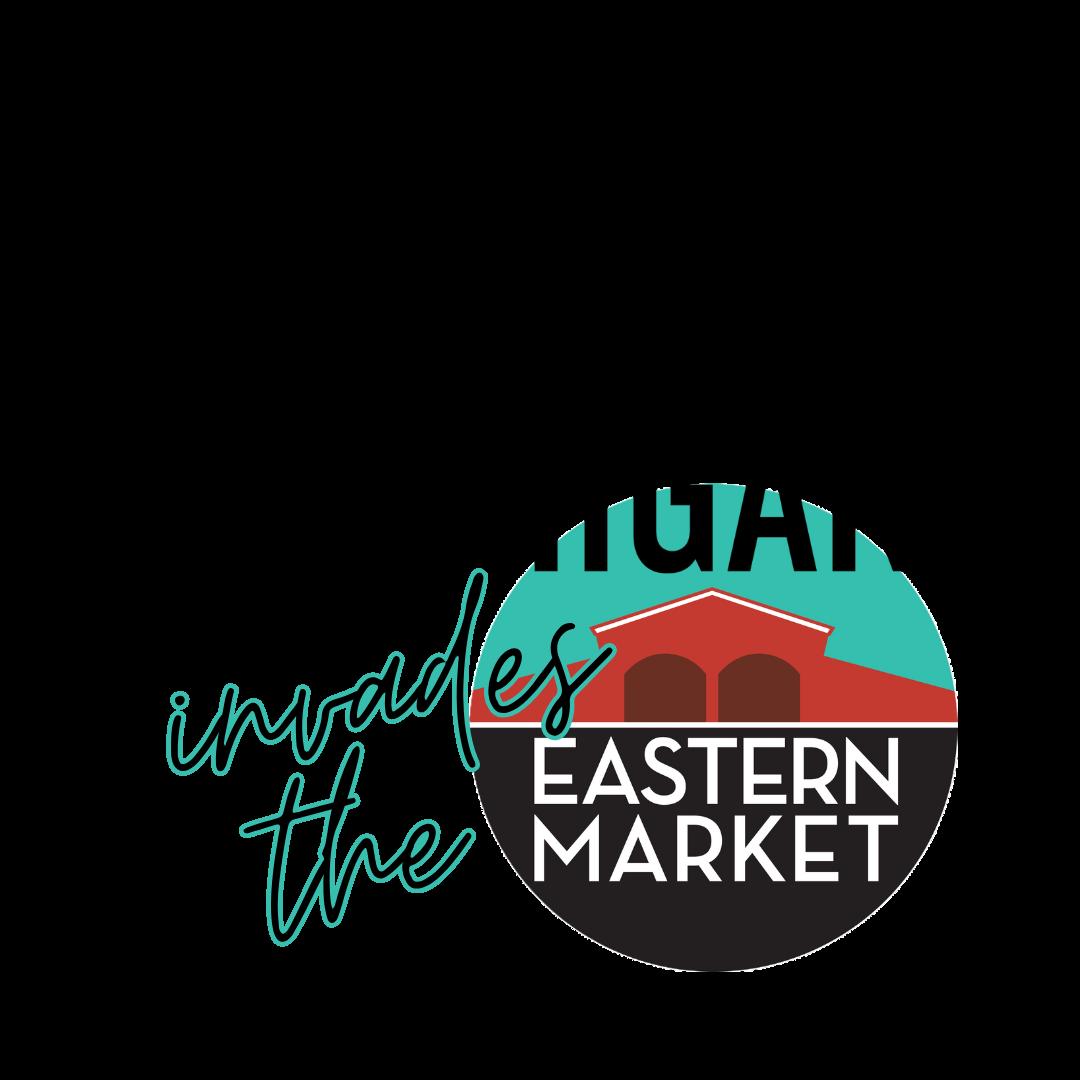
by EMILY DOCKERY
The Michigan Wine Collaborative (MWC) kicked o ff Michigan wine summer 2025 at the historic Eastern Market in Downtown Detroit this past June. The inaugural tasting event, Taste Michigan Invades the Eastern Market, brought 18 Michigan wineries together to pour wines for the patrons of the nation’s largest historic open air public market. This event was a product of local non-profit collaboration, along with a combined passion for local business and products, and finally a thirst to bring the local wine community and the Detroit community together.
Taste Michigan Invades the Eastern Market was a true labor of love. And the fruits of that labor allowed Michigan wine to shine bright on a very hot Sunday in June. Conversely, the concept for the event was born in the thick of winter. Johnnie Jackson of Cool Ass Detroit Stuff reached out to MWC in early January to explore the possibility of organizing a wine tasting fest at the Eastern Market. MWC jumped at the chance to lock in an exclusively Michigan

Continued on next page
wine only event to follow up 2024’s Uncork Me Michigan event that took place at Comerica Park. Unfortunately, the Comerica event ended up being a one off experience…but that only bred inspiration and opportunity for the folks at MWC to come up with a new concept and keep up the momentum of the new statewide wine brand, Taste Michigan.
MWC worked diligently with Jackson to coordinate, organize, and execute a first of its kind event in Shed 5 at the Eastern Market. Jackson’s intimate knowledge of the market was essential for expertly executing the event as it was a completely new venue and process for MWC. We caught up with Johnnie Jackson to get some perspective on the journey of bringing Michigan wine to the Eastern Market.
MU What was the inspiration behind launching a wine tasting event at the Eastern Market?
JJ My inspiration actually came from a place of jealousy and selfishness. I’ve attended The Beer Fest, Tequila Fest, Bourbon Fest, Sandwich Fest, Vegan Fest, Chili Fest, and countless other specialized festivals within the Eastern Market. As a wine drinker, I felt slighted on behalf of the wine community. So I voiced my opinion and willingness to craft an event within the Eastern Market’s Sunday Market format and out of that voice was born a collaboration with MWC to produce the Taste Michigan Invades the Eastern Market wine tasting fest.
MU What was the incentive or motivation for working with local wine producers for this event?
JJ The incentive for me was easy. Being a 10-year vendor of the Eastern Market, I’ve seen the joy that the public shows when they meet the actual farmers, producers, and manufacturers of the goods and services offered at the market. So it felt right to me to be able to stay within that vein. Marketing and offering the opportunity to meet the actual people behind the wine growing and winemaking across Michigan perfectly aligns with the essence of the Eastern Market. There’s no one better to describe, champion,
and educate on local wine than the vineyards and wineries themselves.
MU How does amplifying local vendors and businesses help to cultivate community within the Detroit market?
JJ Sometimes you have to be reminded about just how large Michigan is. Listening to the distances and locations traveled to get from wine country to the Eastern Market was amazing. Everyone was holding up their hands and pointing to their vineyard and winery locations on the ‘Mitt’. Sharing how people market, produce, and go about their day-to-day business practices is something I hope everyone in local businesses gets a chance to experience and learn from each other on. MWC brought a good group of wineries down that exhibited along with other local vendors Cool Ass Detroit Stuff curates for the market regularly. This collaboration made a memorable day for the businesses in Shed 5…along with the excessive heat, the day made for quite the experience.
The Michigan Wine Collaborative partnered with not only Jackson of Cool Ass Detroit Stuff but also Canfield Consortium to promote the Taste Michigan brand, MWC member wineries, the Eastern Market, and the missions of both non-profits. Canfield Consortium is a non-profit local to the city of Detroit. This community development organization is committed to


restoring the neighborhood community experience in East Canfield Village. A common thread between MWC and Canfield Consortium is the commitment to collaboration and supporting local communities. The partnership was a fluid one. We reached out to the leadership at Canfield Consortium to gain some perspective on what this event meant to them and how non-profit and local collaborations can combine resources to make a bigger splash. Kim Theus, president of Canfield Consortium, provided insight into the impact of this collaboration and the event.
MU Why was it important to you to collaborate with another Michigan based non-profit to produce this event?
KT At Canfield Consortium, collaboration is at the heart of everything we do. Partnering with a fellow Michigan-based non-profit for Taste Michigan Invades the Eastern Market was a natural fi t—not only to celebrate local talent and entrepreneurship but to demonstrate the power of collective impact. When organizations come together with a shared vision, we’re able to amplify each other’s efforts, reach broader audiences, and create richer experiences for the communities we serve. Supporting the Michigan wine industry aligns with our goal to highlight underrepresented assets within the state, and we were proud to help bring visibility to an oftenoverlooked sector of Michigan’s cultural and economic identity.
MU How can collaborating with alternative industries help to combine resources and advance missions of nonprofits within a community?
KT Collaborating with alternative industries—like agriculture, hospitality, or the arts—unlocks new pathways for engagement and innovation. For nonpro fi ts, it’s an opportunity to diversify programming, attract different community segments, and learn from other sectors’ approaches to sustainability and growth. These partnerships create shared platforms where resources, ideas, and audiences converge, strengthening the ecosystem for everyone involved. For Canfield Consortium, it also means
weaving cultural and economic development together, which is key to revitalizing neighborhoods in a way that’s communitydriven and future-focused.
MU MWC is on a mission to increase the image of local wine within the Metro Detroit area and also committed to creating access points into the Michigan wine industry among the Detroit community as a way of extending Michigan wine country east and expanding the industry as a whole. How does this mission align with some of the main tenets of Canfield Consortium when it comes to expanding resources to the community and increasing opportunities within the Detroit area?
KT MWC’s mission resonates with our work at Canfield Consortium. Like MWC, we believe that Detroit is not just a place to receive resources—but a place to grow industries, talents, and futures. Creating access points into Michigan’s wine industry brings together cultural pride, workforce development, and economic opportunity—especially for Detroiters who have historically been left out of statewide industry narratives. Whether it’s green space revitalization, arts activation, or supporting local enterprise, our work is about making Detroit a
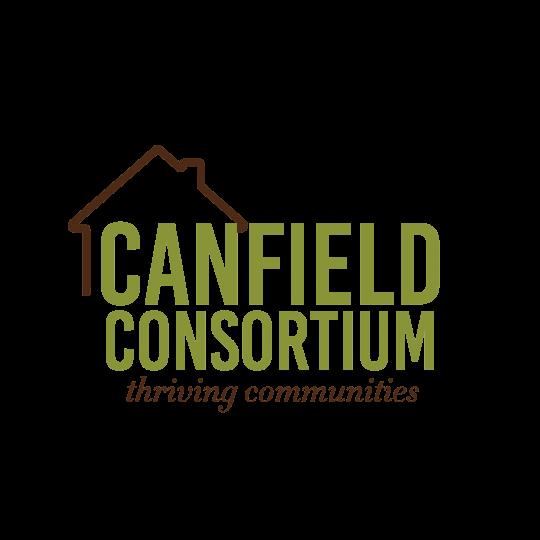
The combined collaboration of MWC, Cool Ass Detroit Stuff, and Canfield Consortium was the foundation behind the successful event. However, the wineries who participated were obviously essential to the execution of the wine tasting experience within Shed 5 on June 22, 2025. Despite record temperatures pushing the heat index to over 100 degrees, morale was high and excitement was flowing along with the wine for the first ever Taste Michigan Invades the Eastern Market. The full line up of wineries included…
Amoritas Vineyards, Bel Lago, Brengman Family Wines, Chateau Chantal, Cherry Creek Cellars, Drew Ryan Wines, Fenn Valley Vineyards, Flying Otter Vineyard, Folklor Wine & Cider, Heronmark, Lake Michigan Vintners, Left Foot Charley, Lemon Creek Winery, Lost Fawn Winery, Modales Wines, Nitz Wine O’Brien Vineyards and Solasta Winery.
The line-up was a broad selection of established and iconic wineries pouring alongside some of the newest wineries in the state. The selection of wineries also represented each AVA as well as producers outside of AVAs, from Leelanau Peninsula, Old Mission, and Tip of the Mitt in Northern Michigan to the Lake Michigan Shore and Fennville in Southwest Michigan to producers hailing from Southeast Michigan such as Cherry Creek Cellars and Flying Otter of the River Raisin Wine Trail and Drew Ryan Wines who will be opening the doors to their tasting room right in the city of Detroit.
Local wine distributors also came together to support and celebrate Michigan wine taking over Eastern Market’s Shed 5. Eagle Eye Brands happened to be the official event sponsor. Eagle Eye has continuously demonstrated their support of the

Michigan wine industry by producing events such as Frontier Winemaking: Michigan, championing Michigan wineries such as Modales and BOS Wines, and supporting organizations such as the MWC. Supporting Michigan wine alongside their distribution colleagues was Carpe Vinum. Nick DiFranco and Kristen Pennington of Carpe Vinum volunteered to pour wine for the event and provided an extra layer of excitement as they networked with the industry, curated comradery with the attendees, and even celebrated the close of the event and an extra hot June Sunday with a refreshing ice bath at the Cherry Creek Cellars table.
Collecting this group of wineries within the Motor City provided the opportunity for attendees to not only be able to taste and learn about wines from all over the Mitten state but also to create an emotional connection to local wine. Folks also had the chance to engage with wineries central to the Detroit area such as those of the River Raisin Wine Trail, located in one of the oldest growing regions of the state, and also get excited for the long anticipated opening of a new winery in the city, Drew Ryan Wines, which debuted their newly bottled and perfectly chilled rosé. A very welcome indulgence on a very hot day.
Belle River Winery | belleriverwinery.com
Michigan By the Bottle | michiganbythebottle.com
Sage Creek Winery | www.sagecreekmi.com
Twisted Cork Winery | www.twistedcorkwinery.com/ Vivace Estate Winery | www.vivaceestatewinery.com/ Youngblood Vineyard | www.youngbloodvineyard.com/
Emily Dockery is the Executive Director for the Michigan Wine Collaborative, http://michiganwinecollaborative.com/. She also co-chair of the Inclusion & Expansion Committee and has extensive experience in the retail wine sales industry and is a graduate of the Lake Michigan College enology and viticulture program.


by LISA CONLEY-KENDZIOR
Wine has long been a man’s world. Nationwide, women make up less than 18 percent of winemakers and hold fewer than 40 percent of leadership roles across the industry. In the Midwest, those numbers are likely even lower, but in Michigan, a quiet transformation is underway. Across the state, women are rising in every corner of the industry—from cellar floors to sales meetings— bringing collaborative energy, bold ideas and an exciting vision for what comes next. Their stories are as varied as the varietals they champion, but they’re united by a common truth: Michigan wine is changing, and so is the face of who’s making it happen.
The floor was sticky. The pumps were loud. The air hung thick with the scent of yeast and crushed grapes. It was harvest 2002, and amidst the chaos stood a young Nancie Oxley: exhausted but exhilarated—and unknowingly on the path to making history.

Before she was breaking barriers, Oxley was a food science student at Purdue University. There, a job logging entries for the Indy International Wine Competition sparked her interest in wine; an internship at Geyser Peak Winery in California sealed the deal. “I loved every moment of what I was doing,” she recalls. “That experience made me realize I wanted to be on the production end of things.”
After graduating, she returned to the Midwest and joined St. Julian, Michigan’s oldest and largest winery. She started in the lab, then moved to the cellar floor, steadily climbing the ranks. In 2010, Oxley made history as Michigan’s first professional female head winemaker.
“I wasn’t going into it trying to blaze a trail,” she says with a humble shrug. “I just knew I loved what I was doing. This is a very male-dominated industry, especially in Michigan. But I held my own. I’d go to conferences, talk with the guys, and be confident in my process.”


Sometimes, though, that confidence was met with condescension. “Over the years, I’ve been invited by male counterparts to come along so they could teach me how to make wine,” she says, laughing. “And I’m like, ‘Well, I’m sure I could teach you a thing or two as well.’”
Today, as vice president of winemaking, Oxley oversees more than 150 wines, ciders and spirits each year. She’s helped shape everything from the winery’s award-winning Braganini Reserve line to its playful novelty labels like Boom Pop and Moo-Low Mint Chocolate. But no matter the style, her work is rooted in one principle: honoring Michigan agriculture.
“We’ve got just shy of 1,000 acres under contract,” she says. “Grapes, cherries, apples, blueberries—you name it, we work with it. We stay true to what we can grow here.” And her belief in Michigan’s unique terroir quickly proved its worth. “My very first vintage here, we won Best Riesling at the Riverside International,” she says. “That was the moment I thought, ‘Okay. I can do this.’”
More than 20 harvests later, it’s no longer about proving herself. It’s about giving back—to her team, her region and the next generation. “I wouldn’t be here without my mentors,” she says. “And I want to be that for someone else.”
The Scientist
She doesn’t make wine or pour it in tasting rooms, yet Dr. Nikki Rothwell has been a cornerstone of Michigan’s wine industry for over two decades. Through data-driven science and hands-on expertise, she helps vintners cultivate exceptional grapes, because as the saying goes, “Great wine is made in the vineyard.”
Raised on a beef cattle farm in rural Michigan, Rothwell developed an early appreciation for agriculture and the natural world. That curiosity led her to pursue degrees in biology, chemistry and entomology, ultimately earning her Ph.D. and building a career rooted in research.
“I love being outside and I love working with growers,” says Rothwell, who joined Michigan State University’s Northwest

Horticultural Research Center in 2004. “The extension model is great because it bridges the gap between academic research and practical farming.”
As the center’s coordinator, Rothwell works closely with commercial growers—mostly apples, cherries, and, increasingly, wine grapes—to help them tackle tough, real-world challenges. “No two days are the same,” she says. “One day I’m collecting dead tree data, the next I’m crawling through vineyards trying to understand cold damage. It’s like agricultural detective work.”
In recent years, that detective work has taken on a new urgency. With climate change disrupting bloom times, intensifying droughts and making spring frosts more unpredictable, Rothwell’s research has turned toward long-term solutions: season extension strategies, cold-hardiness testing, and vineyard practices that prioritize resilience without sacrificing fruit quality. At the same time, she’s also helping the industry push into new territory.
“We’re trying to figure out how to ripen Cab and Merlot here,” she says, noting that those are two varietals that typically struggle in Michigan’s shorter growing season.
Her innovativeness doesn’t stop in the lab; in 2008, Rothwell and her husband, Dan, launched Tandem Ciders in Suttons Bay. “He had a background in brewing, but we were blown away by the quality and abundance of fruit in this region,” she says. “At the time, people didn’t really know what hard cider was. It was truly a niche market, but we saw its potential.”
Today, Tandem is a local favorite, known for its welcoming tasting room, loyal cider club and commitment to sourcing from nearby orchards. Even after all these years, Rothwell still gets a kick when her two worlds intersect: “It’s always funny when my growers come in and say, ‘Wait, you made this with my apples?’”
But earning their trust didn’t happen overnight. “When I was hired, one grower said, ‘Can you believe they hired a broad at the research station?’” she recounts, shaking her head with a laugh. “Years later, he told a colleague, ‘Turns out, they made the right choice.’”


Emily Dockery, a contributor to Michigan Uncorked, didn’t enter the wine world with a grand plan. She was working at a small wine shop in Kalamazoo, trying to figure out what came next, when the industry quietly started pulling her in. “Wine just kept finding its way back into my life,” she recalls. “Every next step seemed to circle back to it.”
A conversation with a local winemaker pointed her toward Lake Michigan College’s then-new wine and viticulture program, and she enrolled on a whim. But it didn’t take long for her to realize that while she loved the industry, she wasn’t cut out for production work.
“I hated being in the cellar,” she laughs. “I didn’t want to wash tanks; I wanted to build something bigger.”

Continued on next page
That “something” turned out to be the Michigan Wine Collaborative, where Dockery has served as executive director since 2016. As the organization’s first and only employee, she wears a lot of hats: event planner, grant writer, outreach coordinator and strategic thinker. “Every year is different,” she says. “There’s always something new happening, which I love. It keeps it exciting.”
At the core of her work is a strong belief in collaboration and community. “We want Michigan wine to have a home base, a space where people feel supported, heard and connected,” she explains. That mindset informs everything the Collaborative takes on, from member surveys to major statewide events like the Governor’s Cup and Michigan Wine Month.


She’s especially proud of the Inclusion & Expansion Committee, launched in 2020 to open doors for historically underrepresented voices in the wine world. “We didn’t want to just bring more chairs to the table—we wanted to build a bigger table,” Dockery says. That effort has led to a first-in-the-nation 4-H Viticulture Club, an educational fund for people of color pursuing wine careers, and a collaborative winemaking series called DREAM, which supports those initiatives. “We’ve gotten national attention for it, which is really cool,” she adds.
Another major milestone: the opening of the Michigan Wine Collaborative wine bar at the Grand Rapids airport, offering travelers a taste of the state’s growing wine scene. “It’s a tangible way to introduce people to Michigan wine, many of whom might not even realize we make wine here,” she says.
Still, change doesn’t come without challenges. Like many women in wine, Dockery has faced skepticism and outdated assumptions along the way. “It takes longer for people to take you seriously,” she admits. “But once they do, you get to be part of something meaningful. And you get to help lift others up. It keeps it exciting.”
On any given day at Shady Lane Cellars, you might find Kasey Wierzba elbow-deep in compost, pipetting juice samples in the lab or pouring a reserve Blaufränkisch for curious visitors. Maybe she’s walking the vineyard rows, inspecting cover crops and bud formation, or coordinating a James Beard Foundation wine dinner. “I do everything from tastings to payroll to planning vineyard blocks,” she says with a laugh. “But at the heart of it is the wine and making sure we’re telling the story of this place.”
Wierzba’s own story began at Michigan State University, where she studied horticulture and took a job in the campus wine lab. There, she discovered winemaking’s unique alchemy: equal parts discipline, creative expression, and connection to land and culture. “I realized it was this beautiful three-legged stool,” she says. “There’s science and precision, but also working with your hands and using your senses. And you get to be outside, engaged in something cultural and communal. I loved all of it.”


She stayed on for a master’s degree, then headed west to hone her skills in Napa Valley, working under acclaimed female winemakers at Frog’s Leap and Far Niente. The experience gave her both technical confidence and a clearer sense of what kind of leader she wanted to be. “I saw what women bring to the winemaking table: grace under pressure, multitasking, and a deep attention to detail,” she
Now back in Northern Michigan, Wierzba leads Shady Lane Cellars as general manager-executive winemaker, a rare dual role that lets her shape every part of the operation, from vineyard practices to hospitality experiences. A committed environmentalist, she’s helped deepen the estate’s sustainability efforts, incorporating biochar, alternative pest management and lighter domestic glass. “Every decision we make engages the whole ecosystem,” she explains. In the cellar, her approach is equally thoughtful. She crafts wines that reflect the grape, the vintage and the region, often resisting trends in favor of authenticity. “Ten years ago, people wanted big, extracted reds,” she recalls. “But I always told them: that’s not the wine our fruit is asking us to make. This is Michigan. It’s supposed to taste different, and that’s a good thing.”
As she looks ahead, Wierzba is focused on thoughtful growth. Shady Lane recently fallowed several vineyard blocks, making way for new plantings of Pinot Gris, Grüner Veltliner, and Blaufränkisch, varietals that have become house signatures. “We’ve learned what works here,” she says. “Now
After all, she adds, that’s what wine—and life—is about: “You make the best of what nature gives you, and you keep moving forward.”

Lisa is senior editor at The George Washington University, where she specializes in human-centered storytelling. She also does freelance work for Washingtonian Magazine and Virginia Wine & Country Life Magazine She spent the fall of 2021 as a harvest intern at a Maryland winery and has been a part-time tasting room associate at a local vineyard for nearly three years.

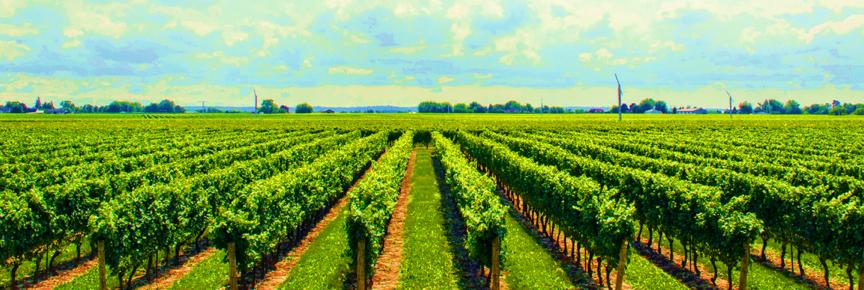
Ellen Landis, CS, CSW
Black Star Farms | 2023 Arcturos Pinot Gris | Old Mission Peninsula/Leelanau Peninsula
Expressive white florals on the nose drive you quickly into the glass. Rich while perfectly balanced with delighHul acidity, and the flavors are lip-smacking delicious. Gliding seamlessly across the palate are layers of poached pears, Red Delicious apples, blanched almonds, Meyer lemon, a whisper of honeysuckle and a nice edge of minerality. Juicy and vibrant through the spirited finish. SRP: $21 | Food pairing: Linguine with clams | www.blackstarfarms.com
Black Star Farms | 2023 Pinot Blanc
Succulent citrus-splashed honeydew melon aromas and flavors kick off this alluring Pinot Blanc. Broadening on the mid palate are flavors of crisp Bosc pears, lemon ice, and a pinch of lemon verbena wrapped around a thread of minerality. Brilliantly focused and lively through the lingering final sip. SRP: $20 | Food pairing: Chicken piccata www.blackstarfarms.com
Black Star Farms | 2023 Chardonnay
Wildly aromaXc is this commanding Chardonnay. MulXlayered and stylish as it graces the palate with irresisXble flavors of fresh BartleY pears, caramel apples, honeysuckle, hazelnut paste and underlying toasty barrel spice. Full bodied and perfectly balanced through the long-lasXng finish. SRP: $24 | Food pairing: RicoYa/pear tortellini www.blackstarfarms.com
Black Star Farms | 2021 Isidor’s Choice Terrace Red | Leelanau Peninsula
A remarkably expressive aroma of spiced berries opens the door to this deeply structured and layered red blend. Rich, velvety layers of wild berries, pomegranate seeds, spiced plum chutney, and fresh tobacco coat the palate. Fine grained tannins and complementary acidity cap off this impressive wine. SRP: $28 | Food pairing: Beef Bourguignon www.blackstarfarms.com
Verterra Winery | 2021 Malbec | Leelanau Peninsula
The dark fruit and hints of earth on the nose are compelling. SaXn smooth and elegant as black plum, blackberry coulis, and huckleberries join tobacco leaf, hints of vanilla bean, nicely integrated oak, and savory spice. A fine backbone of tannins and nice balancing acidity supporXng the generous fruit creates magic on the palate. Approachable and delectable now, and ageworthy. SRP: $49 | Food pairing: Lamb tagine | www.verterrawinery.com
Blustone Vineyards | 2023 Reserve Chardonnay | Leelanau Peninsula
The lustrous aroma engages the senses as this wine approaches the nose. Pure and streamlined with a tasty core of Ambrosia apples, pineapple pastry, a sprinkle of nutmeg, bright citrus accents and underlying oak nuances. Well balanced with ideal acidity, and the finish is long and libed. SRP: $30 | Food pairing: BuYernut squash ravioli www.blustonevineyards.com
Blustone Vineyards | 2023 Reserve Pinot Blanc | Leelanau Peninsula
Aromas of fresh picked apples and citrus blossom shine. Lovely texture and balance prevail as flavors of Melogold grapefruit, Honeycrisp apples, minerally notes and Marcona almonds entwine. Subtle oak notes sit perfectly in the background, and a twist of lemon lingers through the final saXsfying drop. $32 | Food pairing: RoXsserie chicken www.blustonevineyards.com
Continued on next page
Rove Winery | 2022 Cabernet Franc | Leelanau Peninsula
Aromas of wild berries and spice arouse the senses up front. The well-balanced palate displays purity and fine structure. Layers of brambleberries, black currant, graphite, and plum chutney unfold, while cinnamon spice and nicely managed oak add further dimension. Refined and delectable through the extended finish. SRP: $40 | Food pairing: Veal salXmbocca | www.rovewinery.com
Brengman Family Wines | 2023 Chenin Blanc | Leelanau Peninsula
A sXmulaXng perfumed nose sets the pace for this tropical, vivacious Chenin Blanc. Juicy layers of lemon-lime sherbet, fresh pineapple, lemon herbs, quince paste, and minerality decorate the well-balanced palate, and the bright and elegant finish is persistent. SRP: $35 | Food pairing: Lemon drizzled poached salmon www.brengmanfamilywines.com
Brengman Family Wines | 2021 Cabernet Franc | Leelanau Peninsula
Dark berry and florals on the nose lead the way to an enchanXng, mulXlayered palate of black currant, wild brambleberries, blackberry jam, underlying oak spice, a touch of dried herbs, graphite, and fresh tobacco. Richly textured and beauXfully balanced with dark chocolate adding depth to the long-lasXng finish; approachable now and age-worthy. SRP: $75 | Food pairing: Herb crusted rack of lamb | www.brengmanfamilywines.com
Brengman Family Wines | 2023 Block 65 | Leelanau Peninsula
A tantalizing citrus blossom nose draws you in at first whiff of this dry white; a Sauvignon Blanc, Viognier, and Pinot Gris blend. BursXng with vivid flavors of Meyer lemon, white peaches, nectarines, and accents of crushed lemon herbs, it sails harmoniously across the palate. Finely balanced and lively on the sunny finish. SRP: $32 | Food pairing: Avocado/goat cheese crosXni | www.brengmanfamilywines.com
Bel Lago Vineyards & Winery | 2020 Moreno Reserve Pinot Noir
Highly aromaXc with black fruits and earthy tones on the nose. Ideally balanced, refined and pure with dark cherries, black raspberries, exoXc spice, truffles, anise, and underlying oak (from 2-year aging in100% French barrels). This exquisite cool climate Pinot Noir is aging beauXfully. The silky texture transports the wine to a longlasXng finish. Sumptuous now with more years of enjoyment ahead. SRP: $38 | Food pairing: Cremini, shitake mushroom risoYo | www.bellagowine.com

Ellen Landis, CS, CSW, is a published wine writer, certified sommelier, wine educator and professional wine judge. She spent four years as a sommelier at the Ritz Carlton and sixteen years as Wine Director/Sommelier at the award winning boutique hotel she and her husband built and operated in Half Moon Bay, CA. They recently sold the hotel to devote more time to the world of wine. Contact Ellen at ellen@ellenonwine.com



Personalized Wine Glasses are perfect for birthdays, housewarming, bridesmaids, bachelorette parties, and going away gifts. Available at: https://tinyurl.com/ 3fzafmvy | MSRP: $13.95
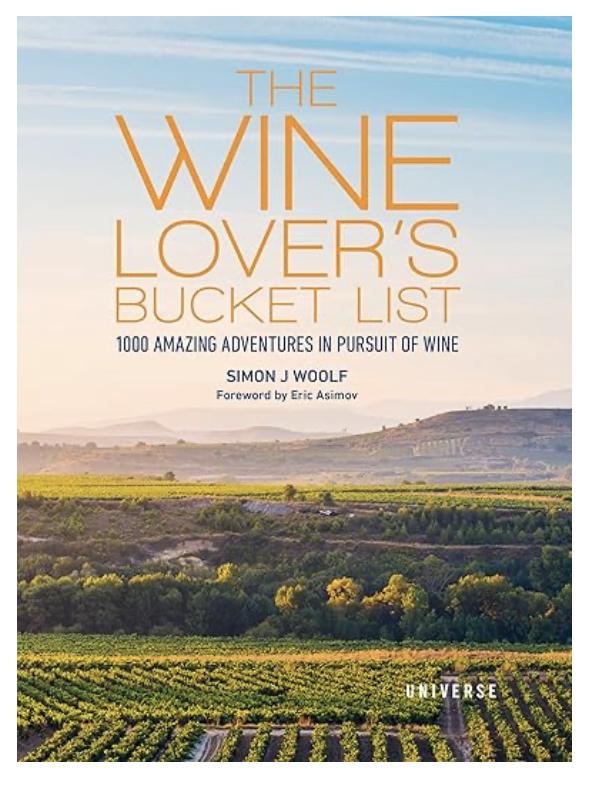
Ivation Wine Gift Set
ALL-IN-ONE WINE GIFT SET – Wine lover’s collection arrives with everything you need to enhance, preserve, pour and enjoy your favorite red or white variety. Available at https:// tinyurl.com/ykvsvm59 | MSRP: $39.99
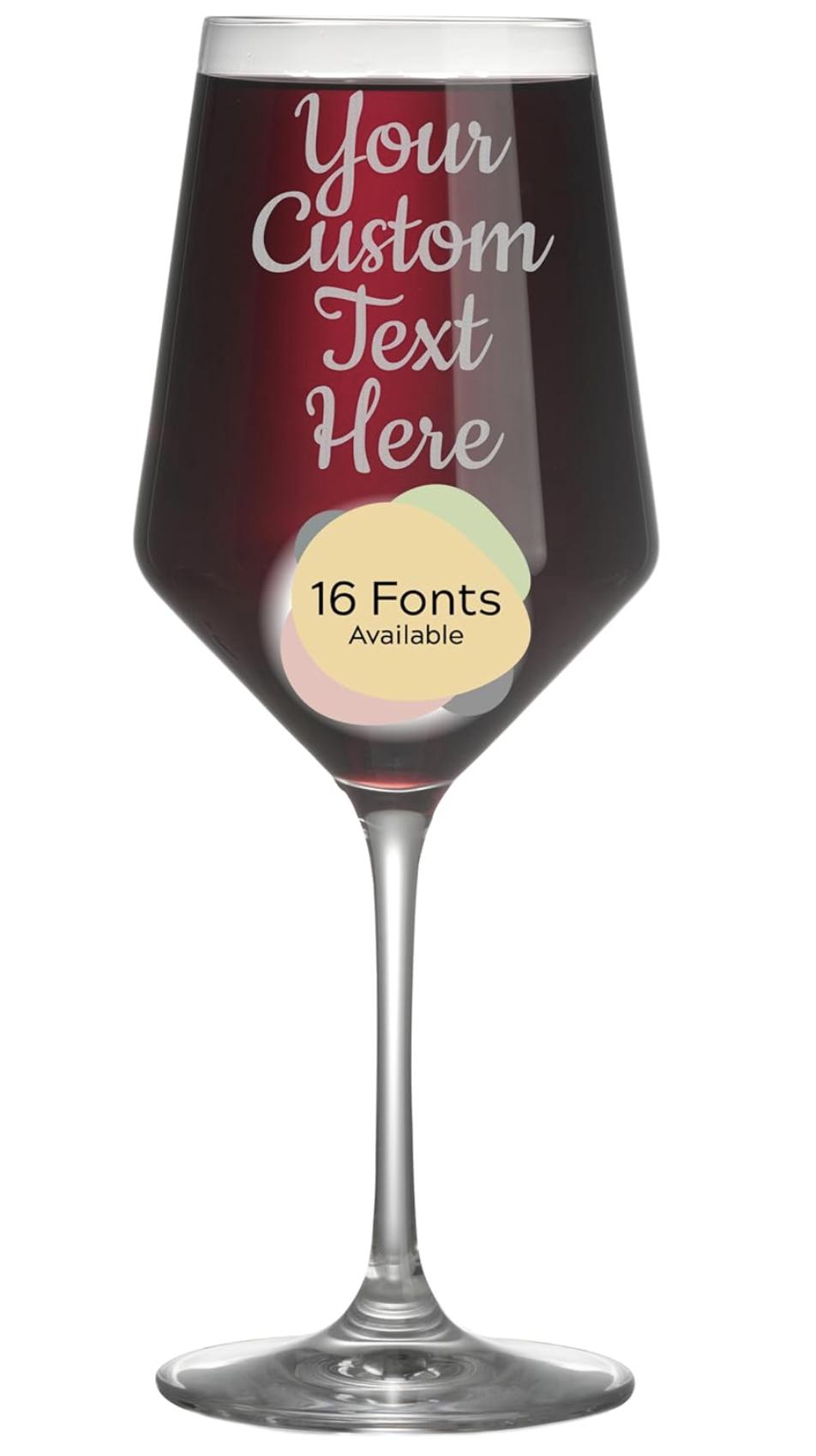
The adventures featured in this atmospherically illustrated book will fuel the wine lover's imagination with an almost endless array of vineyard visits, must-see sights, and must-do events--harvest festivals, vineyard picnics, wineregion weekends, tasting tours, wine-focused restaurants. Available at: https://tinyurl.com/nhfevmaf | MSRP: $23.90
